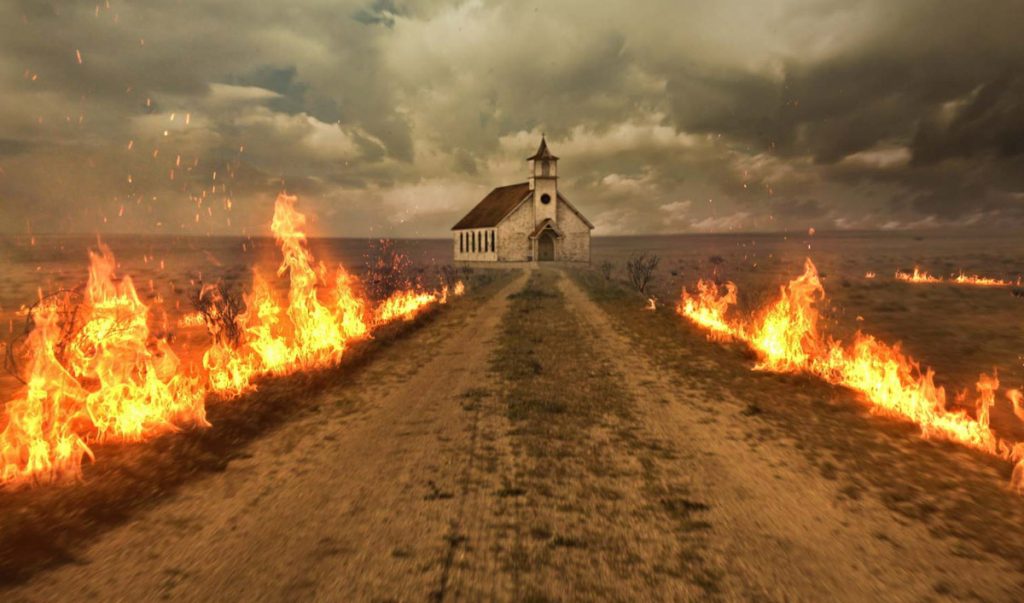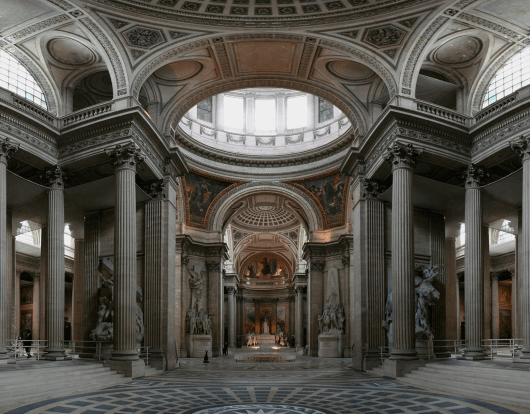Welcome back, this piece is a highly anticipated one. We’ll be covering the final piece of our pantheon world building: typical worship centers and the ordained, and their attendants. See all the Worldbuilding Process Posts. But, before we get into the actual piece it’s worth discussing why this has been so long in the making. The first is a common hurdle for any world builder and game master and that’s simply life getting in the way. A lot has happened in my personal life between starting the pantheon section and today. Some good, some bad, but all more important to my life than writing about make believe religions on the internet. So the end of the section ended up getting shelved.

During those hurdles I ended up shaking things up professionally and personally. And during that process I misplaced the notes for the section. It has taken me forever to find the notes again. It took a lot of searching digital and handwritten notes to find the sundry pieces and compile them once more. And, I lost some interest in finishing the section. Partly because it was going to be so difficult to complete and the other because my interest got caught up with the sexy and flashiest portion of world building, map making, which I was actively researching at the time.
But, now we’re ready to cap off the religion section and continue moving forward in the world building process.
First off, there are a few housekeeping items. The first is determining if this section, like most details of the religion and pantheon section, is important to your world. I’ve stated it before, but it bears repeating. Spend your world building time where your players are going to spend time. If you’re not planning a heavy focus on religion for your story/campaign and you don’t have a player who wants to really play up being a cleric or paladin, then religion doesn’t really matter.
In my experience, most divine class players treat it like any other caster. It’s just a different flavor of spells and they don’t have any interest in dealing with the duties, intrigue, and politics that come with being a member of a powerful, worldwide organization. I wish more did, it’s very easy to ground those characters in the world and build adventures around them compared to something like a fighter. But, it is what it is.
World building to its own end is fun, but should be secondary to cementing the aspects of the setting your campaign and players will actually be engaging. So keep that in mind while using any of these resources.
I’m using the neutral terms worship center and ordained rather than language like church, temple, priest, or brahmin. It’s your world and your game, so use the language that makes sense to you and your players.
Now, make sure you review your section on Making Gods & Religions: Organization & Worship. Ensure your new choices fit with what you already have for your religious organizations. If you have a religion that requires multiple daily devotions at a place of worship, you can’t have that place of worship far away. Make sure the things you determine now, fit with what came before.
Worship Centers Template
Create a general framework for each religion’s worship centers. That way the individual worship centers you create should be about 80% accurate to the general framework. For example, imagine a small church. Not a specific church, just the idea of a simple, cookie-cutter, Christian church. It’s probably a long room, with pews and a dais at one end with a pulpit and a large cross. The walls/windows are illustrated with Bible scenes and it probably has a church bell. That’s the sort of template we are looking to create. It’s a great way to create individual worship centers in your setting that feel connected while still being distinct.

Worship Centers Dedication
Who does the worship center venerate? This can be an interesting question even if you have a zero-deity or monotheistic religion. Your worship centers could be dedicated to different religious VIPs (saints, martyrs, or enlightened teachers). Additionally, new religions often take over the worship centers of old religions. Having a few of these types of worship centers is a great way to add a little zest and verisimilitude to your setting.
1d6 Dedication
- Single God
- Single Religion VIP
- Few Gods
- Few VIPs
- Full Pantheon
- Originally a Different Religion, roll again
Claim to Fame
Places of worship need to generate revenue to keep functioning. Sometimes it’s donation based, but in history often worship centers provided some sort of specialized product, service, or spectacle that became its claim to fame. You want something that drives people to visit, and provides revenue. But, you do need to make sure the claim to fame works with the worship center’s dedication. You don’t accidentally want a temple that reveres a god of death and destruction to be known for its healers.

1d10 Claim to Fame
- Aesthetics (Architecture, Gardens, Music, Painting, Performances, Sculpture)
- Divine/Natural Resource (Alkaline Mud, Holy Body of Water, Hot Springs, Mineral Waters, Natural Salts, Purifying Air, Specialty Flora)
- Healing (Acupuncture, Apothecary, Aroma Therapy, Art Therapy, Bathing Facilities, Bloodletting, Chakra/Pressure Point, Diet & Supplement Manipulation, Healing Crystals/Magnet Therapy, Chiropractor/Osteopath, Massage/Reflexology, Meditation/Prayer, Magic/Miracle Healing, Physical Therapy, Psychotropic Trips, Stretching/Yoga, Surgery, Visualization/Guided Imagery)
- Hospitality (Almshouse, Criminal Sanctuary, Hostel, Religious Persecution, Sanitarium, War Refugees)
- Magical Arts (Purchased Service, Training)
- Martial Prowess (Fighting Order, Mental Training, Physical Training, Tournament)
- Sagacity (College, Court/Legal Judgment, Divination/Prophecy, Extensive Library, Idea Exchange [Debate/Philosophy], Math & Sciences, Secular Humanities, Specialty Niche Knowledge, Timekeeping Calendar/Clock)
- Trade Guild/Product/Service (Any primary industry we typically associate with an area or settlement. Often the locals support the production)
- VIP Reliquary/Interred Remains
- Worship (Indulgences, Patronage, Prayers, Purchased Vigil, Strange/Specific Ceremony)
Layout & Floor Plan
Thanks to the previous work we’ve done on our gods and religions we know where most of the worship centers are located. But, we also want to know about the layout and floor plan of a typical worship center. In most cases, the layout and floor plan should match the prominence of the religion and where it’s placed. Or, be prepared with a good explanation. Consider a university campus style complex of multi-winged buildings in a remote location. If you want to keep it (it does sound cool) you need to be prepared with some mental gymnastics. Maybe it’s a Vatican City-esque religious capital that’s purposefully remote to ensure limited outside influence from nations and kingdoms.

1d6 Number of Buildings
- One
- One
- One
- Few
- Few
- Many
1d10 Building Size
- Small
- Small
- Small
- Small
- Large
- Large
- Large
- Multi-level
- Multi-level
- Multi-winged
1d12 Floor Plan
- Circle/Oval*
- Cruciform
- E-Shape
- H-Shape
- L-Shape
- Odd Polygon (Tri, Pent, Hex, Oct)*
- Rectangle*
- Semi-Circle
- Square*
- T-Shape
- U-Shape
- Labyrinthine (Combine 2d3 Shapes)*
*Interior Courtyard Y/N?
Worship Centers Exterior
Once we have the layout and floor plan we need to give it some exterior features. What makes the worship center notable upon approach. What is the decoration, what about the entrance?
1d20 Notable Exterior Features
- Arches/Buttresses/Columns
- Artwork (Mosaic, Mural, Relief Carvings, Sacred Text/Symbols/Word Art)
- Defensive Fortifications (Watchtower(s), Ditch/Moat, Palisade/Curtain Wall, Motte & Bailey/Keep/Peel Tower)
- Dome/Cupola/Steeple
- Fauna (Domestic or Wild)
- Garden (Flower/Sand/Topiary) and Paths
- Crypt/Graveyard/Memorials/Mausoleum/Ossuary
- Market/Trade Stalls
- Metal Doors (Brass, Bronze, Copper, Electrum, Gold, Iron, Silver, Tin)
- Paint/Pennants/Awnings
- Pavilion/Gazebo/Pergola
- Portico/Colonnade/Veranda
- Minaret/Bell Tower
- Outdoor Ceremony/Performance Area
- Outer Fence/Gate (Torii)
- Sculpture (Busts, Pillars, Menhirs, Obelisk, Statues, Statuettes, Totem)
- Stone Construction (Opposed to brick or timber)
- Water Feature (Fountain, Pond, Reflecting Pool)
- Woodworking (Joinery, Lacquer, Latticework, Unfinished)
- Reroll twice, ignore same result
1d12 What Flanks the Entrance
- Attendants/Ordained
- Banners
- Beggars/Hawkers
- Donation Station
- Guards
- Nothing
- Performers
- Petitioner Line
- Public Soapbox/Forum
- Statues/Carvings
- Wreaths/Floral Arrangements
- Reroll twice, ignore same result
Worship Centers Interior

Now that we have a good idea of what the exterior looks like, we can move to the interior. The interior of your worship center should have some sort of notable feature and a common sensory detail to help bring it to life.
1d12 Interior Notable Features
- Banners/Pennants
- Domes/Cupolas/Vaulted Ceiling
- Elaborate Murals (Ceiling/Walls)
- Intricate Mosaics (Ceiling/Floor/Walls)
- Many Sculptures & Statues/Statuettes
- Prolific Arches & Columns
- Relief Carvings
- Sacred Text/Runes/Word Art (Islamic)
- Stone Construction (Rough/Smooth)
- Tapestries
- Windows (Plain/Stained)
- Wood (Lacquered/Painted/Unfinished)
1d12 Sensory Details & Gilding
- Absolute Silence
- Alcove with Small Altar (Minor God/VIP)
- Bell/Gong/Trumpet/Wind Chimes
- Chant/Prayer/Song
- Forgotten Item
- Instructor and Class
- Large Holy Symbol on Ceiling/Floor/Wall
- Person-sized candles with Text/Hour marks
- Scented Candles/Flowers/Food/Herbs/Incense/Oil/Spices
- Stacked Containers (Baskets, Casks, Crates, Sacks)
- Unattended Pet/Animal
- Water Feature
1d20 Common Worship Centers Visitors to Encounter
- Adventurer
- Beggar
- Council (Local Common, Noble, Religious)
- Criminal
- Diseased
- Fighting Order Warrior
- Foreigner/Heathen
- Mage
- Merchant
- Messenger
- Monk/Nun
- Noble
- Ordained Artisan
- Performer
- Petitioner
- Pilgrim
- Reeve/Bailiff/Sheriff
- Refugee
- Scholar
- Visiting Official/Inquisitor
Worship Centers Ordained & Attendants

Once you have the exterior and interior sorted your center of worship will need some people. We want to develop a good idea of how someone becomes an attendant and ordained, and what they typically look like. In addition to how they look, consider if your ordained and attendants have any defining features that make them easy to pick out. Do they wear a specific type of jewelry, piercings, makeup, or a specific haircut. We have certain religious requirements and restrictions for the layman and attendants. The ordained typically have additional ones you will want to specify. You will also want to know the common types of people a visitor might come across.
Becoming Ordained/Attendant
- Appointment
- Apprenticeship
- Birthright
- Purchased Commission
- Study & Certification
- No Formal Routine
1d4-1 Additional Requirements/Restrictions
- Food/Drink
- Sex/Marriage
- Family/Children
- Gender/Race
- Property
- Body (Deformity, Disease, Tattoos)
- Salary/Work another Job
- Vacation/Sabbatical
1d8 Ordained/Attendant Defining Feature
- Dress Color/Item/Style
- Hair (Body/Head/Facial)
- Jewelry
- Language
- Makeup
- Paint
- Piercing/Body Modification
- Tattoo/Scarring
1d6 Ordained/Attendant Dress
- Destitute (Barefoot and Rags)
- Simple (Sandals, Plain Robe, Wooden Holy Symbol)
- Comfortable (Shoes, Embroidered Robe, Silver Holy Symbol)
- Richly (Silk Slippers, Furs & Finery, Bejeweled Holy Symbol)
- Light Armor, 1d3
- Shield
- Gambeson/Aketon
- Leather/Jack Chain
- Heavy Armor, 1d3
- Chain Mail
- Plate & Mail
- Full Plate
1d6 Ordained/Attendant Carries
- Food/Drink
- Healer’s Kit
- Prayer Accoutrements, 1d4
- Beads/Rosary
- Book
- Rug
- Scroll
- Purse of alms for the poor
- Ring of Keys
- Weapon, 1d3
- Simple: Cudgel, Dagger, Sling, Staff
- Tool: Axe, Hammer, Pitchfork, Sickle
- Martial: Bow, Mace, Spear, Sword
With your worship center template determined you can easily create individual worship centers. Roll 1d10 down the list of criteria you’ve developed. On a 1 or 2, the individual worship center deviates from the template. For example, if your religion’s worship centers often have L-shaped floor plans this individual example might have a T-shaped floor plan.
Then you just need to assign a simple reason for the deviation. Such as the place of worship was originally L-shaped, but the foundation shifted and the building had to be rebuilt in a different shape. With one simple sentence you’ve given the worship center a backstory that makes it easy to identify.
My Worship Centers, Ordained, and Attendants
Here are the results for my own pantheons.
Pantheon One Worship Centers Template
The devout of Pantheon One only show up to worship on major holidays and life events. Instead their worship centers function more regularly as a dormitory with a small chapel. Travelers can stay for free in the dormitory though donations are encouraged. If they donate a certain amount residents can get upgraded to better, more private accommodations. This business plan I can see as thoroughly disrupting the traditional inn economy in my world. Visitors may not be able to find a traditional inn anywhere but in the largest cities, where traveler demand outstrips the beds the dormitory can offer.
The average temple is a sight to behold. A large, multi-floor building in an H-shape. Its courtyards lush with manicured gardens and the bright chirping of birds flitting about birdbaths. The center of the ground floor is an open air chapel that connects the two garden courtyards. The chapel allows free worship day and night of the full pantheon. The interior hallways are lined with relief carvings and the rooms are categorized by religious parables. Requiring people to learn some of the parables just to get around the large building. Visitors are likely to encounter traveling adventurers looking for work.
Ordained
To become ordained an applicant must submit to study as an attendant and pass a certification examination. The ordained wear comfortable clothing of average finery and often carry a small kit of first aid items and medicinal compounds.
Additional Restrictions
- Cannot hold employment
- Cannot consume mushrooms
- Must surrender land ownership to the organization. Upon death the land can be left to an inheritor or retained by the organization. If the ordained leaves the organization they forfeit their rights to land in the organization’s stewardship
Attendants
To become an attendant one must be appointed by an ordained member. Temple attendants dress as paupers. Like the ordained they carry first aid items. Attendants draw no salary and like the ordained, cannot hold employment, forcing them into a functional vow of poverty.
Pantheon One Individual Worship Centers Example
The only difference I rolled was the temple was formerly devoted to multiple gods of a different religion. So this particular temple was built on the grave of an old temple and connects to the crypt beneath. Those who plumb its depths can see unfamiliar iconography. The temple makes a lot of sounds in the night leading to its reputation as being haunted. The temple plays this up as a tourist trap that helps them gain more donations. Visitors are likely to run into all sorts of folk worshippers, religious wingnuts, and amateur investigators.
Pantheon Two Worship Centers Template
The average temple is set apart one or more leagues from a settlement. The buildings are constructed in a pentagonal shape with a central courtyard and thick walls. Entrances are often flanked by guards and it is quite usual for temple attendants to carry some sort of weapon. The temples are rarely fortified, but appear sturdy and defensible, built in mind to survive a bandit raid or goblin attack.
Most temples worship all deities in the pantheon. The temples are most often sought out for their alkaline mud mixtures. Visitors are likely to encounter ordained artisans on official business with the temple. The interior of the temple features low ceilings and large holy symbols embedded in the walls.
Ordained & Attendants
Due to the dispersed authority structure of the religion the ordained and layman attendants are difficult to distinguish in dress or manner. They dress in comfortable clothes and often carry a club or truncheon. Additionally, the ordained hold no additional religious restrictions compared to layman worshipers. The ordained are chosen through apprenticeship and can usually be identified by the paint/dye worked into their hair. To ensure the ordained and attendants are committed to the temple they are barred from holding a job or drawing a salary.
Pantheon Two Individual Worship Centers Example
Occupying a particularly safe area this temple is less squat and defensible than the average temple. Instead it is encircled in a wattle fence and gate, the interior decorated with statuettes. A more refined and delicate interpretation of the typical temple.
Making Gods & Religions: The Conclusion
At this point you should have a good chunk of information at your fingertips to create awesome gods and religions for your world building. This series is written with a focus towards fantasy RPG game masters, but could easily be adapted to a different genre of RPG or used by novelists.
I am both extremely happy and relieved with finishing out this section of the Worldbuilding Process Posts. I’m also excited for the next articles in the world building process. We will continue with the macro, world map, portion of the process. I have my notes on Biomes ready to go and I think you’re going to get a lot out of it without having to slog through a dense resource like the Climate Cookbook.
Hey, thanks for reading all the way to the end. It means a lot to me. If you’re new to the blog, give it a bookmark. I post blogs once a month or more. In addition to world building I tackle other RPG specific topics like building adventures, encounters, home bbrew mechanics, and ways to improve your RPG sessions.
If you’re looking for more of my stuff, I see my pay-what-you-want resources on DriveThruRPG. You can also support the site directly on Ko-fi. If you have any questions or would like to suggest a topic you can catch me on Twitter.
